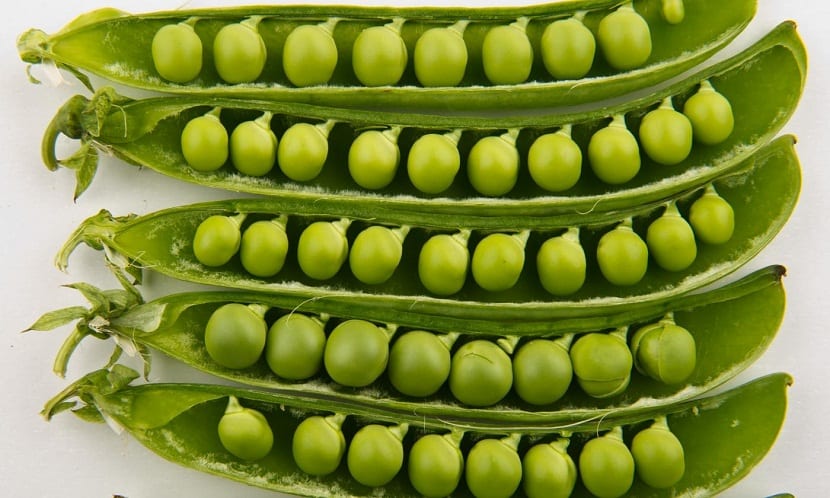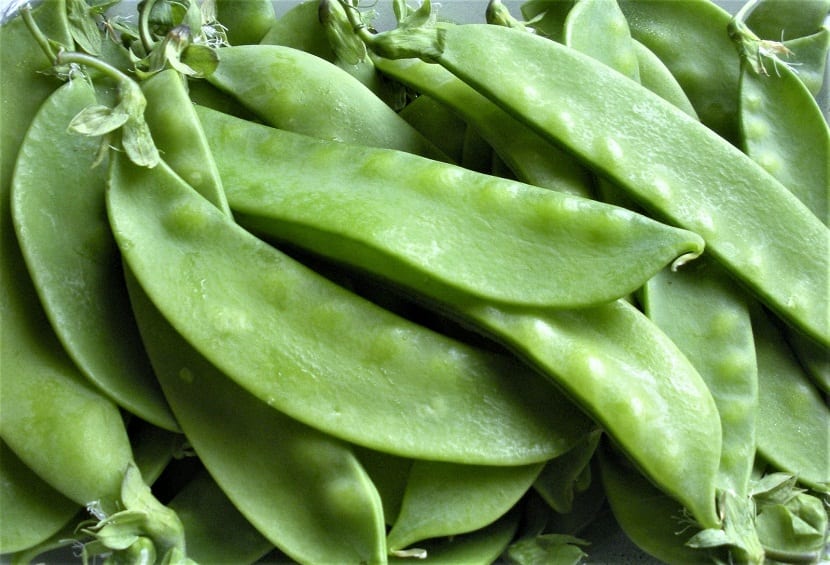
The pea is about a cultivation mainly of temperate climate and a little humid, whose plant usually freezes when faced with temperatures below 3-4ºC below zero and stops growing when exposed to temperatures below 5-7ºC.
However, presents an optimal development when it faces temperatures between 16-20ºC, its maximum being over 35ºC and its minimum between 6-10ºC.

Since ancient times, this cultivation has taken place within Europe and today the pea is considered as one of the best known vegetables around the world, although they mostly tend to be consumed dry, canned or frozen and not fresh.
How are pea varieties classified?
The different varieties of peas that exist They are classified according to the growth of the plant, for which they are named as follows: in:
Dwarf varieties
Its stem is less than 90cm long.
Varieties of indeterminate growth
Its stem has a length greater than 1mt, and in certain cases it is capable of reaching between 2-3mt.
Early varieties
They are those that require fewer days from sowingThere are even some varieties that tend to be a little later and begin fruiting later.
Similarly, it should be noted that the varieties of peas, apart from varying according to the earliness and size of the plant, also vary according to the color and shape of the seed. Because it is essential to take into account certain characteristics, which are:
- Plant size. Small or dwarf if it does not exceed 0,4 meters, semi-climber when measuring around 0,8-1 meter and large or climber when reaching 1,5-2 meters.
- Early, medium and / or late.
- Color of the seed when reaching maturity. White, green and / or yellow.
- Shape of the seed upon reaching maturity. Wrinkled and / or smooth.
Most common types
Among the most common varieties that it is possible to get today, the following stand out:
Bold
It is a small green plant with subtly curved pods, whose dry grains are semi-round in shape and have a smooth surface that presents distinctive holes. Its grains are usually medium-coarse in size, so 1.000 of them can have a weight of around 240-260 grams.
Voluntary
It consists of a slightly curved, dark green sheath that has a sharp tip and their grains are usually large to be able to reach an approximate length of 9-10cm and about 15-16 mm in width.
Generally, each pod has about 7-9 grains. Its dried grains have an oval shape and are normally smooth in surface and include dimples and about 1000 grains of them reach an approximate weight of 315 grams.
Phone
Its green colored pods are usually straight, although it is equally possible to find some with a slightly curved and sharp tip.; reach about 10-11 cm in length and 16-18 mm in width.
Its grains are green, oval and roughThey are usually large and 1.000 of them reach an approximate weight of 300 grams.
snow peas

Also known as "cappuccino”They have a fairly curved and flat pod that allows you to see the shape of their seeds, they are light green in color in the same way as their grains, they measure around 30 mm wide and approximately 14-15 cm long, so they usually be very long.
Its grains are oval and smooth, although they have holes; what's more, are characterized by being dark cream in color and have purple dots, they are usually thick and 1.000 of them weigh at least 280 grams.
TV
It has slightly curved pods that end in a point and are dark green, like its grains; They are usually very long, reaching around 11.5 cm, and each has approximately 6-8 grains.